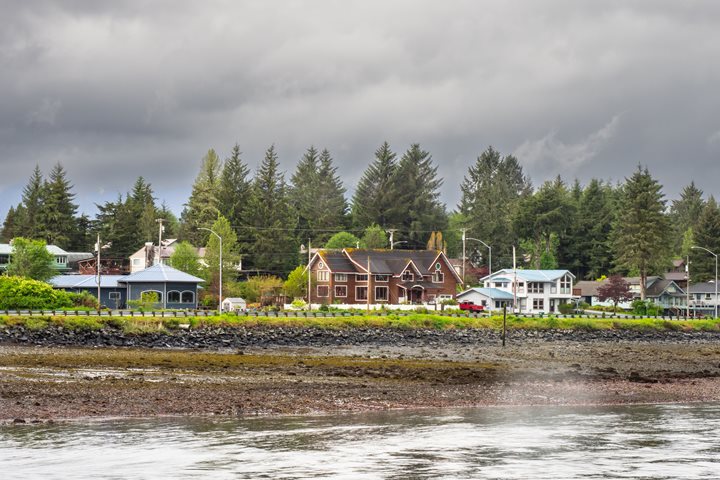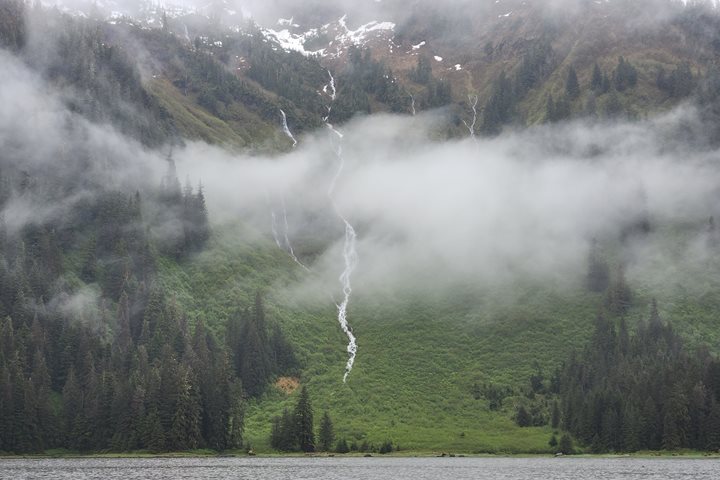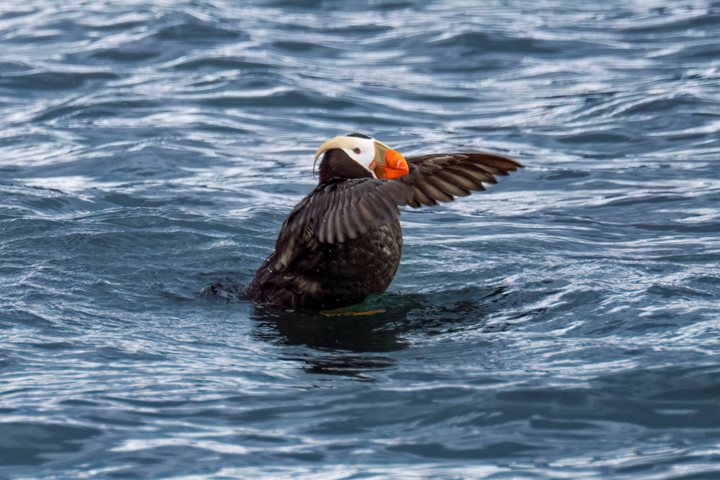What an incredible way to start our week-long Alaska Coastal Wilderness trip aboard National Geographic Sea Lion. This morning the sun rose just before 5:00 a.m. to clear skies in the spectacular Tracy Arm–Fords Terror Wilderness Area. Of the two scenic fjords, we chose the southern route down Endicott Arm to Dawes Glacier.
Soon after entering this 20-plus-mile-long fjord, we started to encounter ice that has calved from the glacier days or even weeks before as the sun beamed over the towering steep cliffs to illuminate the translucent blue ice. Silty waterfalls cascaded down each cliff from the melting hanging and cirque glaciers high above us. An active tidewater glacier greeted us at the end of the fjord with a chilly breeze and a subtle reminder to one of Alaska’s finest features, Dawes Glacier. Ice swirled around in the current as harbor seals poked their heads up near our inflatable expedition crafts. Occasionally, a large piece of ice would calve off the face and reverberate thundering sounds off the steep walls carved by these tremendous glaciers.
In the afternoon, we ventured north up Endicott Arm a short ways towards a tributary fjord called Ford’s Terror. This is a place that has scared many explorers who dared to venture too close to this narrow entrance at the wrong tide. John Muir had such a harrowing experience in November 1879. “Just at the most critical point a big wave heaved us aloft and dropped us between two huge rounded boulders, where, had the canoe been a foot or two closer to either of them, it must have been smashed.” We timed our entry into this narrow gap at a slack tide today and were treated to a majestic bay with towering walls and spectacular waterfalls. Ford’s Terror is one of the most scenic and more difficult places to visit in Southeast Alaska.
We capped off the evening with several humpback whales feeding around the ship in Stephens Passage. So many more adventure to come this week.







